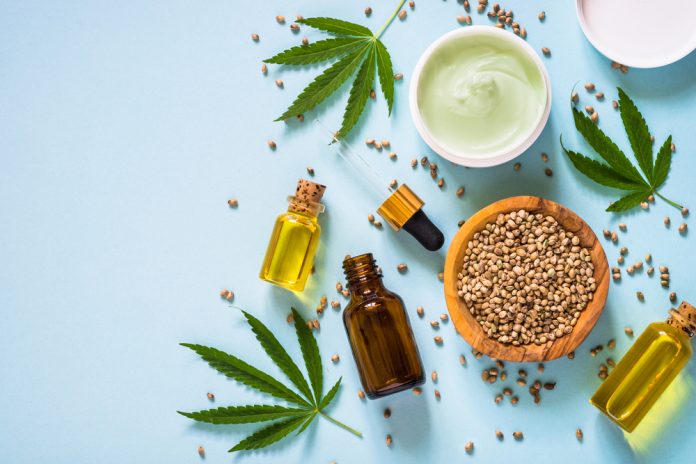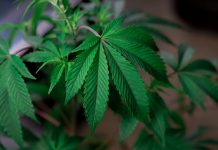Identifying and entering a market with incredible profit potential is the dream of any entrepreneur, and that’s the biggest reason why there has been an absolute explosion of new CBD brands over the past couple of years. Cannabidiol (CBD) is a non-psychoactive compound extracted from industrial hemp, and research suggests that it could have a wide variety of benefits for specific health conditions and for overall wellness. Since you can find research suggesting that CBD could be good for just about anything, millions upon millions of people have tried it — and many of those people continue to use CBD daily.
It’s predicted that the global market for CBD will reach $5.3 billion within five years.
For now, there’s plenty of room for an entrepreneur with marketing savvy and lots of ambition to enter the CBD industry — but what, exactly, does it take? In broad strokes, this article will outline the steps required in starting a CBD brand.
Identify an Underserved Niche in the CBD Market
Before you do anything else, you need to decide what the general concept of your CBD brand will be. Entering the CBD industry means that you’re going to compete with hundreds of other brands, and trying to create a product that appeals to every CBD buyer could ultimately mean that you’ll end up appealing to almost no one. You need to find a concept that will differentiate your brand, and you can do that by identifying an underserved niche in the CBD market.
To name a practical example, Louisiana-based CBD brand Crescent Canna found its niche by developing the highest-potency CBD oil on the market.
Once you’ve identified your target market, the rest of your brand’s image and identity should fall into place naturally as you create a plan for how best to reach and serve that market.
Map Out Your Supply Chain
Before you can start a CBD brand, you need to have a product to sell. The first thing you need to know about the CBD industry is that full vertical integration — growing and extracting your own hemp for your own CBD products — is almost impossible to achieve. Hemp is a very difficult crop to grow on a commercial scale. It could take multiple growing seasons to iron out the issues and ramp up production. By the time you’ve done that, commercial hemp farming certainly might be a possibility, but the window of opportunity for success as a CBD brand will most likely be closed.
The best way to get a CBD product to sell, then, is to have someone make that product for you. Luckily, the hemp processing industry is full of companies that can produce finished goods at very competitive prices. Hemp processors buy hemp from farmers, and they have the equipment and expertise to make CBD products ranging from oils and capsules to lotions and gels. Some processors will even customize the products for you, giving you an assortment of CBD goods that are uniquely your own. The fastest and most affordable way to secure a range of CBD products ready for sale is by buying those products from a hemp processor.
Verify the Quality of Your Products
If you’re not the one making your own CBD products, then you don’t know anything about what’s in those products until you send them to a lab for testing — and as much as you might like to assume that everything you purchase from a hemp processor is exactly what you expect it to be, there’s only one way to determine that for certain.
Put differently, if it turns out that your products contain less than the advertised amount of CBD — or they contain more than the maximum legal amount of THC — it’ll damage your brand irreparably. No one will care that you got a faulty product from a hemp processor.
To verify the quality of your products, you’ll need to send samples from each batch to a third-party lab for testing. Labs will test for cannabinoid content, of course, but you may want to have the lab test for unwanted contaminants such as heavy metals, pesticides and solvents as well. Any test that highlights the purity of your products will improve your standing in your customers’ eyes. Keep the test results; you’ll want to publish them on your website for your customers to see.
Build Your Website
Once you have your line of CBD products, you’ll need a way to sell those products. That, of course, will require a website. If you’ve never built an e-commerce website, platforms like Shopify make it easy to get up and running. The risk of using an off-the-shelf e-commerce solution like Shopify, though, is that you could end up with a website that looks like everyone else’s website and has no differentiating factors of its own.
It is definitely worth the expense of hiring a developer to create a website that stands out, and it’s even better if your developer also has some visual design skills. When you developed your initial brand concept, you identified who your target market would be. Now, it’s time to build a website with a visual look and user experience designed specifically to appeal to that market.
Get the Word Out
When you’re ready to begin selling your products, it’s time to get the word out about your CBD brand. Here’s where the final piece of the puzzle — your ability to market products online — comes into play. Hopefully, you’ve already researched the market climate for CBD companies and discovered that most traditional forms of online marketing — advertising on Google AdWords, for instance — are not available to you.
Since you can’t just pay for web traffic like companies in traditional niches can, you’ll need to be a bit more creative about marketing your CBD brand — and it all begins with great content. From the start, you should do everything you can to bring organic traffic to your site by making your product pages as useful and informative as they can be and by publishing interesting content on your blog. You may also find it worthwhile to strike up relationships with hemp industry publications and advertise on hemp-related websites and forums.
Find a Home-Based Business to Start-Up >>> Hundreds of Business Listings.

















































